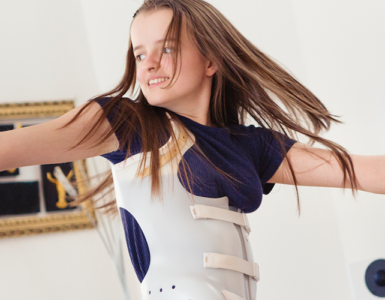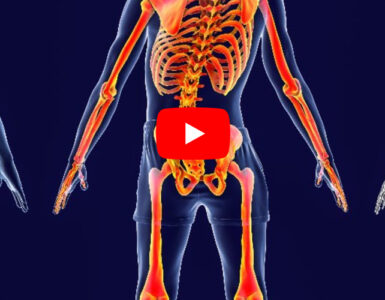Kyphosis is a spinal condition causing an excessive curve in the upper back, sometimes leading to discomfort and an altered posture. Whether you’re an older adult, teenager, or infant, the causes, symptoms, and treatment of kyphosis vary, depending on the severity of your spinal curve.
What is Kyphosis?
Kyphosis is a spinal deformity in which the upper spine curves more than usual, leading to a rounded or hunched appearance. While some degree of curvature in the upper spine is normal and mild cases of kyphosis may not cause any problems, an excessive curve might bring discomfort, stiffness, back pain, and a rounded posture.
Kyphosis can occur in older adults when weak spinal bones compress or crack. In infants, it is called congenital kyphosis and occurs when their spinal column fails to develop normally in the womb. With teenagers, kyphosis may be related to a malformation of the spine.
Kyphosis Symptoms and Diagnosis
Kyphosis varies in severity but often reveals itself through a rounded upper back. Generally, a more significant curve to the upper spine will cause more serious symptoms. In severe cases, people may experience a visible hump in the back, stiffness, back pain, numbness or weakness in the legs, and breathing difficulties.
Diagnosing kyphosis begins with discussing the patient’s medical history and symptoms. A physical exam checks for the characteristic curve and areas of tenderness. X-rays are used to measure the degree of curvature and determine if there are any other abnormalities.
Can Kyphosis Be Reversed?
Kyphosis treatment involves stopping curve progression and preventing debilitating spinal deformity. Mild kyphosis may not require treatment, but a doctor will monitor the patient’s curve with periodic physical exams and X-rays. Sometimes, a back brace and/or exercises to improve posture is recommended.
In severe cases, when kyphosis has caused a significant spinal deformity leading to pain and discomfort, surgery may be needed. Surgical treatment may also be recommended for congenial kyphosis to stop the progression of the spinal curve in children.
Spinal fusion is the most common type of surgery for kyphosis. This procedure involves fusing the vertebrae to reduce the spinal curve.
Whether or not the condition is treated with surgery, it’s recommended that patients with kyphosis receive regular examinations by their doctors to monitor potential curve progression.












